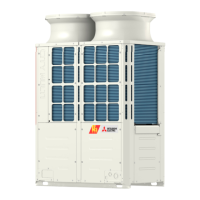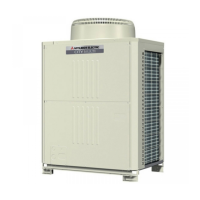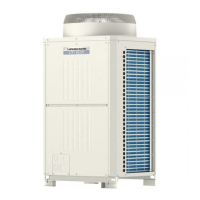
Do you have a question about the Mitsubishi Electric PURY-P450YLM-A(1) and is the answer not in the manual?
| Series | PURY-P |
|---|---|
| Refrigerant | R410A |
| Sound Pressure Level (Outdoor Unit) | 62 dB(A) |
| Power Supply | 380-415V, 50Hz |
| Operating Temperature Range (Cooling) | -5 to 46 °C |
| Operating Temperature Range (Heating) | -15°C to 24°C |
Essential safety precautions to be followed before installing or operating the unit.
Details on preparing piping for system installation, including materials and handling.
Guidance on handling piping materials, refrigerants, and oils, emphasizing safety and compatibility.
Procedures for working with refrigerant piping, including brazing and testing.
Safety precautions and guidelines for electrical wiring work to prevent hazards.
Summarizes compatible indoor units for different outdoor units and system capacity limits.
Specifies cable types and maximum lengths allowed for transmission and remote controller wiring.
Specifies restrictions on refrigerant pipe length, size, and BC controller connection methods.
Details the external appearance and lists the refrigerant circuit components of the outdoor unit.
Provides schematic diagrams illustrating the refrigerant circuits within the outdoor units.
Describes the functions of the main components found in the outdoor unit.
Presents the electrical wiring diagrams for the outdoor unit, showing connections between components.
Covers the overview, rotation control, initial control, and various operational modes of the outdoor unit.
Outlines essential checks for refrigerant leaks, loose connections, and power supply before starting a test run.
Step-by-step guide for performing test runs on the system using MA and ME remote controllers.
Explains key operation characteristics and the importance of correct refrigerant charge for system performance.
Guides on evaluating and adjusting refrigerant charge, including overcharge and undercharge symptoms.
Details problems related to refrigerant control, including capacity issues and operational anomalies.
Provides solutions and troubleshooting steps for various inverter-related issues and component checks.
Details procedures for identifying, repairing, and managing refrigerant leaks in the system.
Provides a comprehensive table detailing LED status indicators, their displays, and associated meanings.












